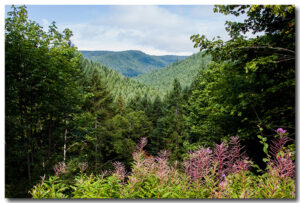There are many good reasons for public lands managers to take quick action to remove dead and dying trees after a wildfire. Salvaging scorched timber is not only important to supporting our local forest sector, it is critical to ensuring safe public access, mitigating and managing fuel loads to reduce the likelihood of future catastrophic wildfire, and allowing safe access for firefighters in the event of future fires.
Removing dead and dying trees also ensures that impacted acres are adequately reforested to ensure these forests can continue to provide multiple values for future generations.

Actions taken after the Tillamook Burn is perhaps the greatest example of post-fire recovery and reforestation in Oregon’s history. After a series of wildfires during the last century, people came together to salvage scorched timber and plant new trees across hundreds of thousands of acres, allowing Oregonians in this century to enjoy these lush, green forests once again
Yet on Oregon’s federal lands today, removal of dead and dying trees doesn’t happen as often as most people think, including those managed by the Bureau of Land Management. Of the 125,000 acres of BLM O&C timber lands in western Oregon that burned during the 2020 wildfire season, less than 10 percent received post-fire treatment.
One reason is the endless anti-forestry litigation that ties the hands of our public lands managers and keeps them from restoring fire damaged lands. A Nov. 17 article in the Headlight-Herald offers a good example why.
In 2020, the BLM finalized a new rule expediting post-fire recovery and reforestation efforts on federal lands. Specifically, the rule created a new 3,000-acre categorical exclusion under the National Environmental Policy Act to help expedite the removal and sale of dead and dying trees on BLM O&C lands in Western Oregon.
Under the federal O&C Act, the BLM has a mandate to harvest timber under the principles of sustained yield, meaning harvesting occurs at a rate that is in balance with, and does not exceed, the growth rate of the forest. Revenues from O&C timber harvests, including salvage harvests, are shared with western Oregon counties, including Tillamook County, to sustain essential public services.
Unfortunately, anti-forestry groups don’t want dead and dying trees to be removed for any reason or at any time. After suing the agency to block the new rule, the BLM settled with the groups and agreed to pull the new rule. These groups are now doubt celebrating their victory, but it comes at a cost.
If dead and dying trees can’t be quickly removed and processed into wood products, they are left to fall and rot, emit carbon and fuel future fires. If hazard trees are not quickly removed along forest roads and sold for wood products, public land managers must either close those roads permanently, or remove and stack those dead trees along roadsides at considerable taxpayer expense. Forests and roads choked with dead and dying trees also creates hazardous conditions for public recreation, firefighting and forest workers.

Anti-forestry groups hail their victory as a boon to wildlife, including the Northern Spotted Owl. Yet, according to the Fish & Wildlife Service, nearly 14,000 acres of owl habitat on BLM land in 2020 was burnt at moderate and high severity, and the resulting erosion and sedimentation could threaten aquatic habitat and water resources into the future. As dead trees remain on hundreds of thousands of acres of BLM lands, there’s a risk that future reburns will result in more harm to wildlife species and their habitat.
It is ironic for these groups to consistently oppose proactive, science-based forest management that would’ve helped reduce the risks of catastrophic wildfire in the first place, and then later block the BLM from salvaging more dead and dying trees and generating funding that can be used to reforest our blackened public lands. Considering the impacts of anti-forestry litigation, it is worth wondering what the Tillamook State Forest would look like if the Burn happened today.



